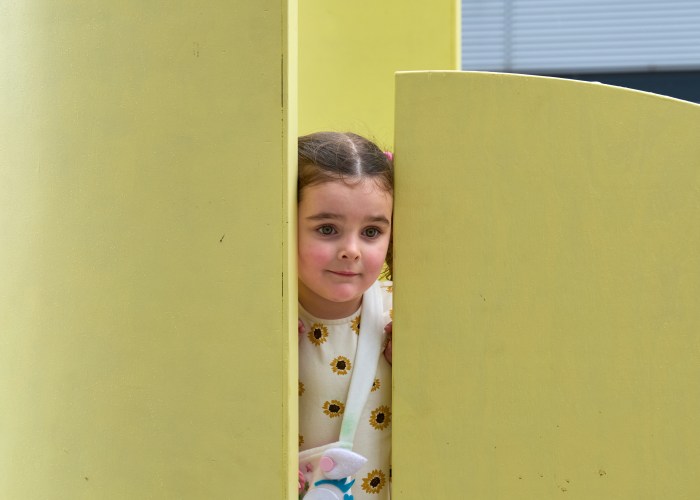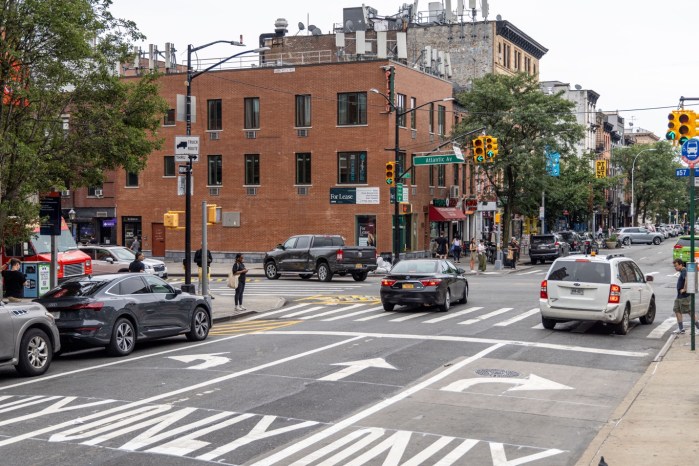Raccoons are popping up across the borough, from Jacuzzi covers to backyard kiddie pools, and the city’s advice? Calm down and call 311 —even though calling the city hotline won’t solve your varmint problem.
“If they are healthy raccoons, we would ordinarily not remove them,” said Richard Gentles, the spokesman for the city’s Center for Animal Care and Control, which responds to 311 calls about raccoons.
“If they’re on private property, the property owner would have to call a wildlife removal service.”
And chances are, they are healthy raccoons. Brooklyn hasn’t seen a rabid raccoon since at least 1992, according to the city’s Health Department.
The city’s seeming indifference to raccoon-inspired fear is a hard pill to swallow for people like Mary Pantaleo, a Bay Ridgite who has two raccoons squatting in her backyard and was one of many borough residents who called The Brooklyn Papers after our front-page expose last week on the invasion of the masked bandits.
“They made a nest between my porch and my neighbor’s fence with plastic bags,” said Pantaleo. “One night I was in my backyard, and I see this raccoon just sitting in my lounge chair scratching itself!”
“Another night, two raccoons started mating on top of my Jacuzzi cover. I was petrified!”
Pantaleo is desperate to evict the two bushy-tailed critters, and her fear is not surprising, given the average Brooklynite’s lack of exposure to raccoons.
Gentles, the state Department of Environmental Conservation, and the City’s Health Department could not offer any answers as to why Brooklynites are spotting more raccoons. In fact, the agencies and Gentles contend that they haven’t noticed an increase in complaints about the animals.
But Bob Zink, who runs the Staten Island–based Wildlife Rehabilitation and Education Center and routinely works with the Center for Animal Care and Control, thinks the explanation is overdevelopment.
“When you displace their habitat, they have nowhere to go,” said Zink. But fortunately for the raccoons, not everyone wants them to get outta here.
Angela Fagan, a Borough Park resident, spotted raccoons taking a dip in her kids’ baby pool in September, and she was smitten.
“I love seeing things like that,” she said. “And, I wouldn’t mind seeing them again.”
Whether or not Fagan does see them again depends largely on luck — it’s a tough life out there in the concrete jungle.
Zink routinely cares for orphans whose mothers have been hit by cars. He says poisoning is also a common phenomenon, although he warns it’s illegal.
Even the city bureaucracy poses a danger.
Gentles said that all raccoons trapped by the agency in Staten Island, the Bronx or Queens get euthanized as a precaution (all three boroughs have seen some rabies cases in the past year).
In Manhattan and Brooklyn, trapped raccoons get turned over to rehabilitators, who care for them until they are ready to be released into the wild.
Given the perils of city life, Zink never releases his caught raccoons back into the boroughs.
“That’s like signing their death warrant,” he said. “I release them upstate.”
Zink recommended less-drastic measures to deter the critters, including using screw-top garbage cans, which raccoons, despite their famously useful thumbs, can’t open.
In a final plea for his beloved raccoons, Zink added that they’ve been here longer than we have.
“They’ve traveled these lands for thousands of years, and they have a right to live on the land,” said Zink. “They don’t know about property rights. We have to learn to live with the wildlife.”






















